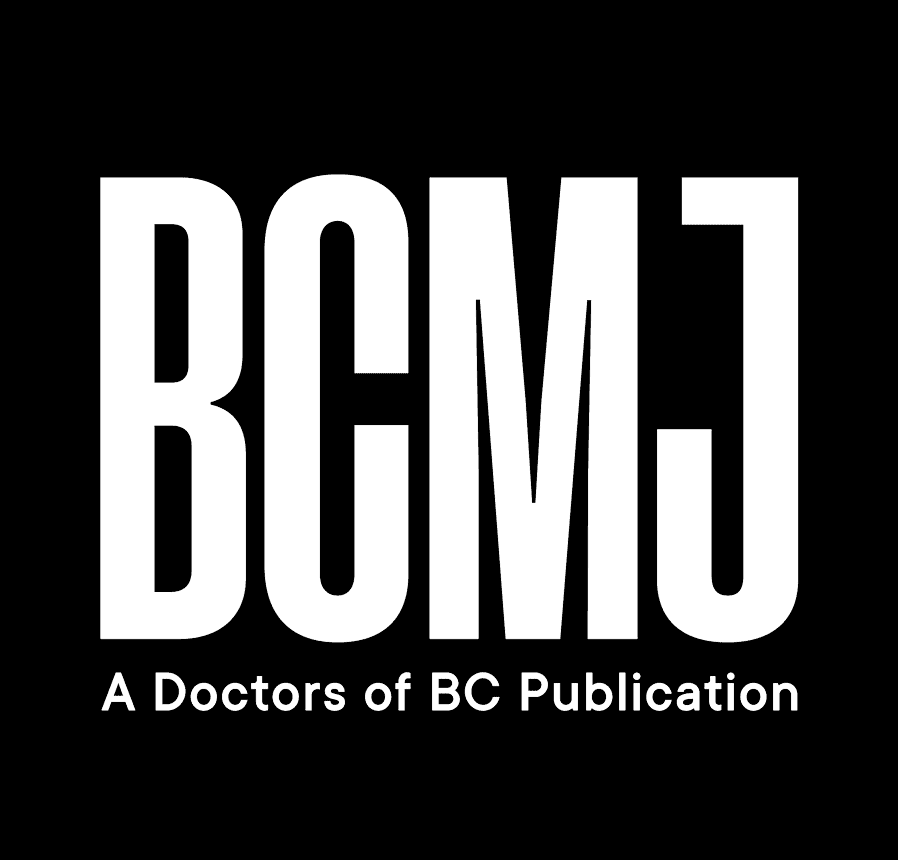Medical students’ service-learning in the Refugee Health Initiative: A mixed-methods program description and evaluation
The Refugee Health Initiative’s service-learning program deepens BC medical students’ understanding of the refugee experience and provides practical support to refugee families experiencing displacement.
Background
There have been persistent calls among medical educators and researchers to promote social accountability in medical training.[1-4] The field of refugee health offers an opportunity for service-learning, a pedagogical framework used to augment medical school curriculums to promote empathy,[5] social accountability,[6] and an understanding of the health advocate role.[1] Health advocates support “patients in navigating the health care system” and use their “knowledge of the determinants of health to positively influence the health of [those] they serve.”[7] The Royal College of Physicians and Surgeons of Canada identified health advocate as one of the six key roles of a medical expert.[7]
Service-learning balances community needs with student learning objectives by creating reciprocal partnerships.[8] While required volunteerism in medical school curriculums risks perpetuating inequalities by reinforcing an us–them dichotomy, students who critically engage with service-learning can build meaningful relationships with community members, reflect on systems of power, and become agents of change.[9]
Medical students across Canada have a demonstrated interest in refugee health,[10] and most Canadian medical school curriculums introduce foundational learning objectives on the subject.[11] Modeled after the University of Ottawa Refugee Health Initiative, the University of British Columbia Refugee Health Initiative was created in response to refugee communities’ calls to action in Greater Vancouver following an influx of Syrian refugees fleeing war in 2016.
Program description
The Refugee Health Initiative (RHI) is a service-learning program that creates partnerships between refugees who have recently settled in Greater Vancouver, interpreters with relevant lived experiences, refugee-serving community partners, and preclerkship medical students. RHI pairs refugee families with medical students and interpreters who can help the families connect with relevant resources, educational opportunities, and services to help them settle in their new communities.
Language interpreters are recruited using the program members’ social networks based on the demographic information received in refugee family referrals. Interpreters complete a criminal record check and privacy and confidentiality training.
With the family’s consent, community partners refer refugee families to RHI and share the number of people in the family, along with their names, country of origin, primary language, and individualized support needs. RHI has supported families originating from Syria, Afghanistan, Pakistan, and Palestine. The majority of RHI families are Arabic speaking, though RHI also supports families using Farsi, Dari, and Punjabi interpretation.
All government-assisted refugees who have settled in Canada within the previous 12 months are eligible for referral. In their first year of resettlement, refugee families in Canada have extended health coverage under the Interim Federal Health Program,[12] which includes limited vision, dental, and medical supply coverage. Medical students can leverage their understanding of the health care system to help newly settled refugees maximize their use of the program.
To assess gaps in support, medical students and RHI families complete the Vulnerability Screening Tool Settlement Checklist during their first meeting.[13] The checklist was designed by the Vancouver Association for Survivors of Torture to help professionals working with refugees screen for potential vulnerabilities and resiliency factors relevant to the mental health and settlement of refugees in British Columbia. RHI also aims to support refugee-serving community partners by providing context-relevant information.
Program results and evaluation
Between 2016 and 2024, RHI medical students, interpreters, and refugee community members dedicated 3552 hours to service-learning. Seventy-two medical students, 62 refugee families, and 110 interpreters formed 62 small groups, which met regularly. To engage in community outreach, students worked with five community partners to collaborate on presentations about 11 health and well-being topics and, with help from interpreters, facilitated 72 presentations for 700 refugee participants.
In a convenience sample of 12 medical student–refugee pairings, students reported their partner families were accessing a median of 4 out of 10 (range: 1 to 7) community resources highlighted by the Vulnerability Screening Tool Settlement Checklist.[13]
Students reported they helped families access medical appointments; housing resources; appointments with settlement or social workers; community programs and events; dental appointments; employment and volunteering opportunities; English language programs; nutrition resources, including food banks; résumé-writing services; school, college, and university services; mental health resources; immigration lawyers; and birth registries.
No families reported they were seeing a psychiatrist, psychologist, or clinical counselor prior to their involvement with RHI, and only 6 out of 12 families had a primary care provider.
In addition to learning about forced migration from the refugee families, students reported that their participation in RHI improved their knowledge of local community resources. One student shared that RHI “[had] made [them] significantly more comfortable with using an interpreter in clinical situations [and] aware of some of the barriers that newcomers to Canada may face, and [they] try to . . . advocate for [their] patients by addressing communication barriers and connecting them to the appropriate community resources.” Medical students further their communication, advocacy, and cultural competencies by completing annual RHI training, completing postmeeting reflective templates, and participating in bimonthly meeting discussions.
Interpreters indicated they were motivated to volunteer with RHI because of their desire to positively impact their community, act as advocates, explore careers in health care, and help educate medical students. In an evaluation survey, multiple interpreters stated that RHI’s strength was its ability to build connections between medical students and refugees. Interpreters also reported that refugee families gained a “better and deeper awareness of how the medical system works” through connections made in the program and that there was “tangible change for families.”
While the scope and impact of other service-learning initiatives, including those at the University of Ottawa and Johns Hopkins University, have been previously described,[10,14] RHI has demonstrated unparalleled sustainability and scale in terms of the longevity of the program and the number of refugees supported.
Program limitations
RHI and this program assessment have limitations. RHI is unable to provide each family with more than a few hours of volunteer support each month. Also, medical students are limited in the type of support they can provide. They can help arrange appointments with primary care providers but are unable to provide medical advice.
Given that refugee families must be connected to a community organization to be referred to RHI, it is possible that the supports provided are redundant at times and that efforts could be of greater impact to families who are not engaged in other community supports. However, connecting with those families is a challenge. Additionally, because refugee families must be connected to a community resource like the Resettlement Assistance Program, the RHI program structure is not generalizable to all medical schools in Canada. Only 36 communities across Canada support the Resettlement Assistance Program,[15] so medical students may not be adequately supported in the community to engage in a refugee health service-learning program.
In the past, RHI has chosen not to request feedback from refugee families on a regular basis so as not to burden them. RHI plans to seek feedback from refugee families in future program evaluations and to continue to support refugees in Greater Vancouver and engage medical students in health advocacy.
Call to action
Social support and community integration improve refugees’ well-being,[16] and language barriers and trauma act as barriers to refugees accessing health care.[17] Notably, the Provincial Health Services Authority provides translation services 24/7 in over 200 languages to patients and their families.[18] We call on physicians and allied health providers in BC to address language barriers in their clinics and refer refugees to adjunctive resources in the community, particularly while they have extended coverage under the Interim Federal Health Program.[12]
Competing interests
None declared.
Acknowledgments
The majority of RHI team members and community partners live, work, and learn on the traditional, ancestral, and unceded territories of the xʷməθkʷəy̓əm (Musqueam), Sḵwx̱wú7mesh (Squamish), and səlilwətaɬ (Tsleil-Waututh) Nations. The authors thank the refugee families, community partners, interpreters, students, and faculty supervisors for their ongoing support.
hidden
This article has been peer reviewed.
 |
| This work is licensed under a Creative Commons Attribution-NonCommercial-NoDerivatives 4.0 International License. |
References
1. Dharamsi S, Richards M, Louie D, et al. Enhancing medical students’ conceptions of the CanMEDS health advocate role through international service-learning and critical reflection: A phenomenological study. Med Teach 2010;32:977-982. https://doi.org/10.3109/01421590903394579.
2. Walling E, Lachance E, Yeo L, et al. Key drivers of social accountability in nine Canadian medical schools. Med Teach 2021;43:182-188. https://doi.org/10.1080/0142159X.2020.1832205.
3. Hennen B. Demonstrating social accountability in medical education. CMAJ 1997;156:365-357.
4. Thoma B, Karwowska A, Samson L, et al. Emerging concepts in the CanMEDS physician competency framework. Can Med Educ J 2023;14:4-12. https://doi.org/10.36834/cmej.75591.
5. Yang Y-S, Liu P-C, Lin YK, et al. Medical students’ preclinical service-learning experience and its effects on empathy in clinical training. BMC Med Educ 2021;21:301. https://doi.org/10.1186/s12909-021-02739-z.
6. Punzalan JK, Guingona M, Punzalan MG, et al. The integration of primary care and public health in medical students’ training based on social accountability and community-engaged medical education. Int J Public Health 2023;68:1605359. https://doi.org/10.3389/ijph.2023.1605359.
7. Frank J, Snell L, Sherbino J, editors. CanMEDS 2015 physician competency framework. Ottawa: Royal College of Physicians and Surgeons of Canada; 2015.
8. Seifer SD. Service-learning: Community-campus partnerships for health professions education. Acad Med 1998;73:273-277. https://doi.org/10.1097/00001888-199803000-00015.
9. Mitchell TD. Traditional vs. critical service-learning: Engaging the literature to differentiate two models. Mich J Community Serv Learn 2008;14:50-66.
10. Warmington R, Sickand M, Saliba L, et al. Global health education locally: A community service-learning program to support refugees, engage medical students, and fill a gap in the community. Ann Glob Health 2014;80:181. https://doi.org/10.1016/j.aogh.2014.08.065.
11. Gruner D, Feinberg Y, Venables MJ, et al. An undergraduate medical education framework for refugee and migrant health: Curriculum development and conceptual approaches. BMC Med Educ 2022;22:374. https://doi.org/10.1186/s12909-022-03413-8.
12. Government of Canada. Interim Federal Health Program: What is covered. Modified 13 August 2024. Accessed 12 March 2025. www.canada.ca/en/immigration-refugees-citizenship/services/refugees/help-within-canada/health-care/interim-federal-health-program/coverage-summary.html.
13. Vancouver Association for Survivors of Torture. Refugee readiness project: Vulnerability screening tool. 2016. Accessed 12 March 2025. https://bcrefugeehub.ca/wp-content/uploads/2023/01/VAST-Vulnerability-Screening-Tool.pdf.
14. Bernhardt LJ, Lin S, Swegman C, et al. The refugee health partnership: A longitudinal experiential medical student curriculum in refugee/asylee health. Acad Med 2019;94:544-549. https://doi.org/10.1097/ACM.0000000000002566.
15. Government of Canada. Find help to adjust as a refugee in Canada. Modified 29 July 2024. Accessed 12 March 2025. www.canada.ca/en/immigration-refugees-citizenship/services/refugees/help-within-canada/government-assisted-refugee-program/providers.html.
16. Fazel M, Reed RV, Panter-Brick C, Stein A. Mental health of displaced and refugee children resettled in high-income countries: Risk and protective factors. Lancet 2012;379(9812):266-282. https://doi.org/10.1016/S0140-6736(11)60051-2.
17. Borgschulte HS, Wiesmüller GA, Bunte A, Neuhann F. Health care provision for refugees in Germany—One-year evaluation of an outpatient clinic in an urban emergency accommodation. BMC Health Serv Res 2018;18:488. https://doi.org/10.1186/s12913-018-3174-y.
18. Provincial Health Service Authority. Interpreting. Accessed 12 March 2025. www.phsa.ca/health-professionals/professional-resources/language-services/interpreting.
hidden
Dr Binda is a graduate of the University of British Columbia Faculty of Medicine and is completing her general surgery residency at the University of Ottawa. Mr Al-Zeer is a medical student at UBC. Dr Kapoor is a family physician and clinical assistant professor in the Department of Family Practice at UBC.

